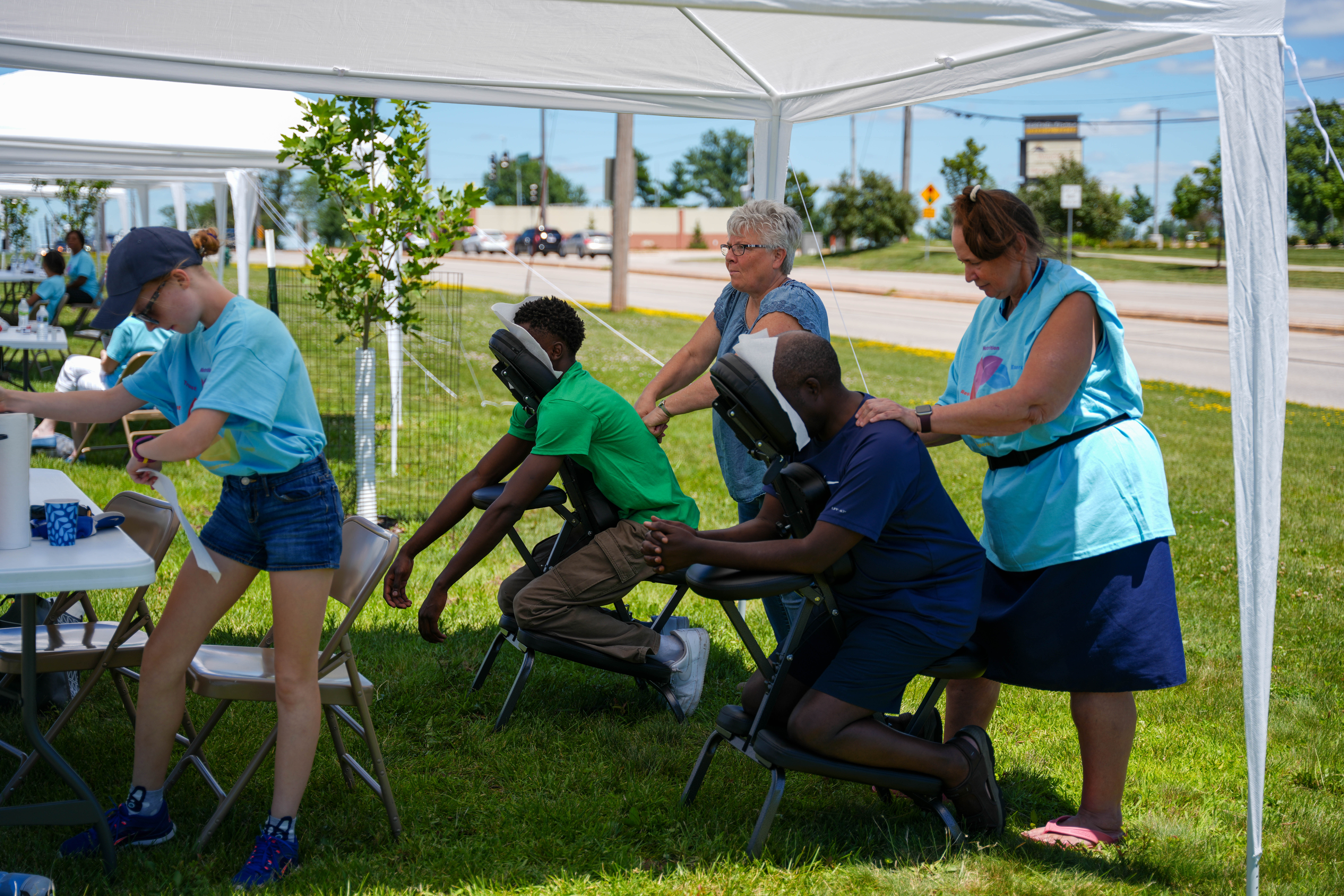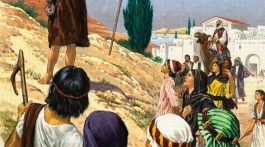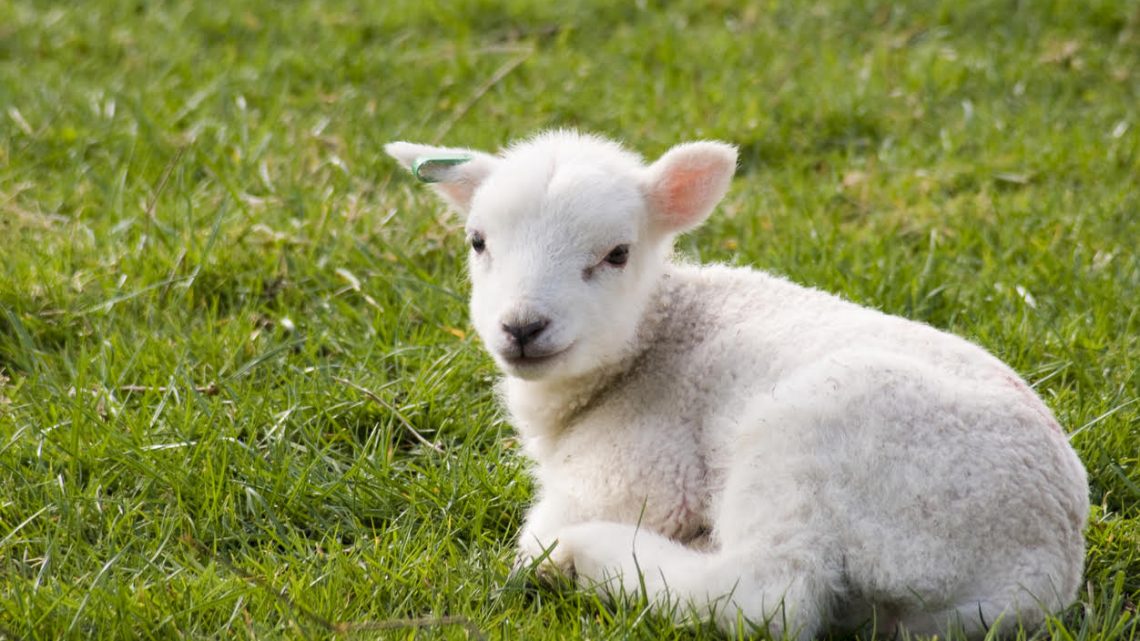Sabbath School Lesson for January 19-25, 2019
Overview
Looking at chapters 4 and 5 of Revelation this week, we are treated to a glimpse of the throne room in heaven, where God is worshiped with all the pomp and glory befitting the King of the Universe.
Some questions we explore are…
- What is the purpose of this heavenly gathering? (Sunday)
- Who are the worshipers there? (Monday)
- What is the sealed scroll and what does it contain? (Tuesday)
- Who is the One being worshiped in this scene? (Wednesday)
- Why is the Lamb seated on the right hand of God? (Thursday)
Introduction
Our attention has been focused on earthly churches, and the history of God’s people they represent from John’s time till the Lord’s Second Coming. But suddenly, John’s vision thrusts him into the throne room of God in heaven, and we witness the most glorious worship service John or any of us has ever imagined.
Revelation, chapters 4 and 5, set the stage for further prophecies that Christ revealed to His servant John during his lonely exile on the island of Patmos. Besides the magnificence of the scene, John is struck by certain puzzling features of this heavenly event. He certainly must have pondered who the worshipers were and what was contained in the sealed scroll, carried by the One who sat on the throne.
This week, we also explore these questions, and the answers will fortify our faith by reminding us of the power and majesty of our heavenly King. God surely has our salvation under control. We can be assured that the universe will one day be rescued from our enemy, Satan.
Memory Text: “… ‘Do not weep. Behold, the Lion of the tribe of Judah, the Root of David, has prevailed to open the scroll and to loose its seven seals.’ “ Revelation 5:5 NKJV
Even without knowing what is in the scroll, knowing the One in charge of its contents helps relieve some of our anxiety about the situation. Described as the Lion of the tribe of Judah, the Root of David, and later as the Lamb that was slain, this Redeemer is as worthy of worship as His Father, the Creator. Both are praised by various worshipers in the throne room.
Sunday: In the Heavenly Throne Room
Before receiving any more details of the future of our world, John is transported in vision to a throne room in heaven that far surpasses anything constructed for royalty on this earth. He is privileged to see a ceremony of worship that must have overwhelmed him with its glory and beauty.
This heavenly council seems to exist for the purpose of praising God, who appears as both Creator and Redeemer. Hymns are sung to both of these majestic figures, leaving John awestruck with the perfect harmonious melodies, blended in ways human voices have not yet witnessed on this earth.
The splendor of the surroundings, in which John was immersed, was inspiring. A rainbow, reminding John of an emerald, graced the throne, symbolically reminding us, thanks to Noah’s story, of God’s faithfulness in keeping His promises.
Discussion Questions:
Read Revelation 4:1-3, 21:23, 22:5, and Ezekiel 1:26-28. Where does the light and brightness of this heavenly scene come from?
Read Revelation 4:8-11. Why is the Lord God worthy of worship?
Read Revelation 5:9-13. Why is the Lamb worthy of worship?
Monday: The Heavenly Assembly in the Throne Room
“Around the throne were twenty-four thrones, and on the thrones I saw twenty-four elders sitting, clothed in white robes; and they had crowns of gold on their heads.” Revelation 4:4
This verse help us know who the 24 elders are:
- In Revelation 3:5, among other verses in the Bible, we are told that overcomers will be clothed in white garments.
- Ch. 3:21, speaking to the Laodicean church, says that overcomers will sit with God, on His throne.
- 2 Timothy 4:8 tells us that the Judge will give a crown of righteousness to those who love His appearing.
The term “elders” elsewhere in the Bible is always used to designate humans. Therefore, it is easy to identify these twenty-four elders as glorified human beings (or saints), saved from our sinful earth through the power of the Messiah’s blood.
The number of them, being 24, is most likely symbolic. There were twelve tribes of Israel, twelve disciples. Could this then be all the risen and translated saints in the Old and New Testaments? In addition, there were 24 divisions of priests who took turns serving in the earthly temple, and it appears that duty is similar to the function of these 24 heavenly elders, leading out in the worship and praise of God.
Also, surrounding the throne, are what are called “four living creatures”. John was at a loss of words to describe the characteristics of these creatures. Most likely they are the seraphim (an order of angels), which encircle God’s throne, corresponding to the “covering angels” over the ark of the covenant in the Most Holy Place.
John saw quite a large crowd worshiping in that throne room, unfallen angels and those redeemed from the earth. Revelation 5:11 says:
“Then I looked, and I heard the voice of many angels around the throne, the living creatures, and the elders, and the number of them was ten thousand times ten thousand, and thousands of thousands. NKJV
Discussion Questions:
Read Revelation 4:4, 3:21, Isaiah 61:10, and 2 Timothy 4:8. Who are most likely these twenty-four elders, and how do we know?
Read Revelation 4:6-9, Isaiah 6:2, and Hebrews 9:5. What evidence do you see that the four living creatures were angelic beings of some kind?
Read Matthew 27:51-53. Ellen White suggests in “The Desire of Ages”, p. 786, that “those who came forth from the grave at Christ’s resurrection were raised to everlasting life. They ascended with Him as trophies of His victory over death and the grave.” Is it possible that some of these might be among the twenty-four elders in John’s vision?
Tuesday: The Sealed Scroll
One can only imagine what might be contained in this sealed scroll, but John sensed the importance of its contents and it brought him to tears, because no one seemed, at first, able to open the seals.
Since no problem looms larger to those on earth than the sin problem, we can understand the reason for John’s tears. Since the Lamb is the One found worthy to open the seals on the document, it appears obvious that the scroll must contain the plan of salvation, our “exit plan” from all the sadness brought about by Satan’s rule on planet earth.
One author has summed up the scroll’s contents this way…
It contains “the history of God’s providences, the prophetic history of nations and the church. Herein was contained the divine utterances, His authority, His commandments, His laws, the whole symbolic counsel of the Eternal, and the history of all ruling powers in the nations. In symbolic language was contained in that roll the influence of every nation, tongue, and people from the beginning of earth’s history to its close.” ~Ellen G. White, Manuscript Releases, vol. 9, p. 7
In Revelation 10:7, as more detail is given concerning the seals on the scroll, we find the term “mystery of God” used to describe this salvation process, as the final seal is opened.
“but in the days of the sounding of the seventh angel, when he is about to sound, the mystery of God would be finished, as He declared to His servants the prophets.” NKJV
It is indeed a mystery that God would love this sinful world enough to sacrifice His own Son to win us, undeserving sinners, back from Satan.
Discussion Questions:
Read Revelation 5:1-4 and Isaiah 29:11, 12. Why was no one “in heaven or on the earth” able to open the seals and look at the scroll, let alone read it? Why did it take the Son of God?
Read Revelation 5:5, Hebrews 7:14, and Isaiah 11:10. How is it evident that Jesus is the One found worthy to open the scroll?
Revelation 10:7, and 11:15. When will the mystery of God be revealed?
Wednesday: Worthy Is the Lamb
- The first two hymns John heard seem to be directed at the One sitting on the throne (Revelation 4:8, 11).
- The third and fourth hymns (Revelation 5:9-12) praise the Lamb.
- The fifth and final hymn in chapter 5, verse 13, combines the two being worshiped, both “Him who sits on the throne, and to the Lamb”.
The angels in heaven (led by the “four living creatures”) begin the singing by pointing out God’s eternal qualities (the first hymn). The twenty-four elders join them in praising God for being our Creator (the second hymn).
The Lamb is then praised for dying for our sins, being our Redeemer, and for making us priests and kings in heaven. Quite possibly, the glorified saints will have leading parts in these emotionally-packed songs to their Savior.
The grand finale of this heavenly concert will “bring the house down”, so to speak. The last hymn combines worship to both the Father and the Son for all that has been done to gain victory over Satan and offer peace once again to the universe.
Discussion Questions:
Read Revelation 5:8, Revelation 8:3, and Exodus 30:1, 6. How far do our prayers reach in heaven? Why is it important for God to “save” these prayers for this grand heavenly council? What do they tell us about God?
Read Revelation 5:9, Ephesians 1:20-23, and Isaiah 61:6. Why are we made priests and kings in this heavenly Kingdom? What tasks will we have in this role?
Read Revelation 5:10-14, Matthew 28:18, and Hebrews 7:25. How extensive and complete is Christ’s ministry in heaven?
Thursday: The Significance of Pentecost
We can’t miss the contribution of the Holy Spirit to this celebration that John witnessed in vision. Although the hymns seem directed mostly to God the Father (as our Creator) and His Son (recognized as the Lamb that was slain), Revelation 5:6 mentions “the seven Spirits of God” which are “sent out into all the earth.”
It seems the Spirit is happy to be at the beginning of events, helping to get things moving. He was present at the Creation of our world (“And the Spirit of God was hovering over the face of the waters.” Genesis 1:2 NKJV)
At the time of Christ’s re-entry into heaven after His time on earth, the Holy Spirit was also active. Spiritual gifts were showered on the disciples at Pentecost, as the Spirit helped launch the New Testament church.
As we enter this next phase of heavenly ministry, the Spirit of God is once again a participating member of the divine trio.
Discussion Questions:
Read Revelation 5:6 and Genesis 1:2. How wide was the Spirit’s influence?
Read Revelation 5:7 and Acts 2:32, 33. Why is Jesus given this special place beside God the Father? What is significant about “the right hand”, and how does that explain some of the symbolism here?
Read John 7:37-39. Why was the Spirit’s presence an important feature at the time of Pentecost; what was going on in heaven right after Christ’s ascension? How similar is this event to the one John sees in this heavenly vision? What do they signify?
And, finally…
Seeing the Holy Spirit’s abundant presence three times in the Bible might throw light on the three compartments of the earthly sanctuary, helping us see the plan of salvation, which comprised the sealed scroll in John’s vision.
- At the beginning of our earth’s creation, the Spirit hovered over the waters (Genesis 1:2). The courtyard of the tabernacle is where the altar of sacrifice and the lavar (washbasin) were located. Revelation 13:8 calls the Messiah the “Lamb slain from the foundation of the world”.
- At Pentecost, Christ entered heaven and began a new phase of ministry in the Holy Place–that of ministering to His people and preparing for the final phase of salvation.
- At the close of this earth’s history and the beginning of a new Kingdom for all God’s followers, He enters the Most Holy Place, corresponding to the heavenly throne room that John saw portrayed in vision.
The Father, the Son, and the Holy Spirit are indeed all worthy of our adoration, now and forevermore. And we feel all the more protected and loved, as we include the next verse in our effort to memorize Psalm 91 this quarter:
“He who dwells in the secret place of the Most High shall abide under the shadow of the Almighty. I will say of the Lord, ‘He is my refuge and my fortress; my God, in Him I will trust.’ Surely He will deliver you from the snare of the fowler and from the noisome pestilence. He shall cover you with His feathers, and under His wings you will take refuge; His truth shall be your shield and buckler.” Psalm 91:1-5
Next Week’s Lesson: The Seven Seals
To read the Sabbath School Lesson Quarterly or see more resources for its study, go to https://www.absg.adventist.org/
Other Outlook blogposts by Teresa Thompson, are at http://outlookmag.org/author/teresathompson/










